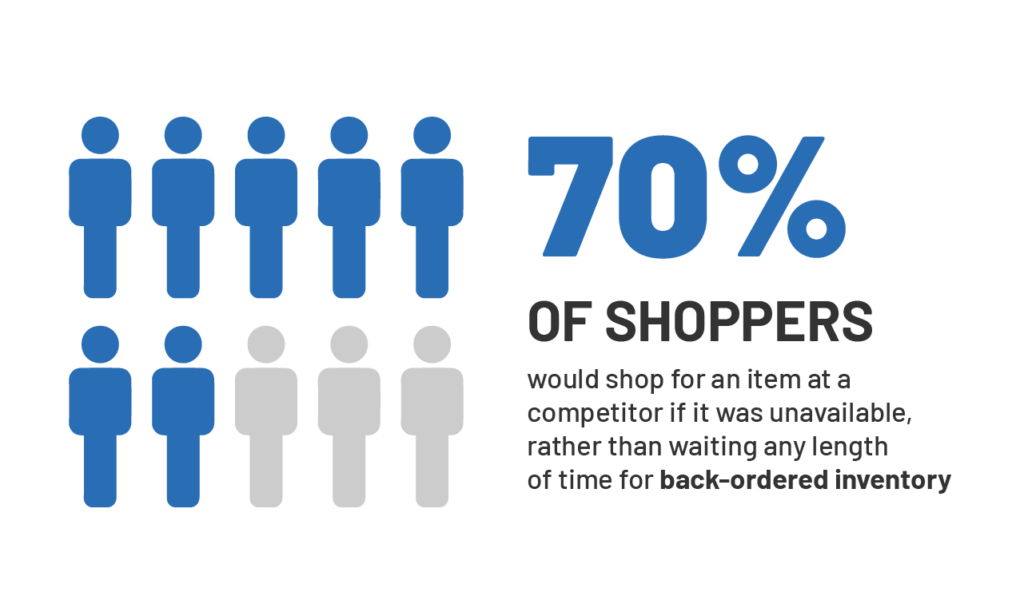
Everything You Need to Know About Retail Inventory Management
Time to read: 6 minutes
Strong inventory management is a necessity for running a successful retail business. You can save time and money while ensuring you have the ideal number of products in optimal quantities at the right times.
Retailers must ensure they supply the correct mix of products to meet demand at an attractive price. You’ll also need to limit the cost of carrying too much stock by combining data analytics, automation, and experienced staff. Retailers can cut back on excessive shipping and taking expenses by using effective retail inventory management.
Retail inventory management estimates the appropriate inventory levels to be kept on hand or stored across sales channels for each commodity type. Logistics software forecasts the demand and value of products held in inventory for accounting and auditing purposes. It also includes a range of best practices to ensure products are kept and dispatched efficiently to retail locations. Inventory management’s main objective is to ensure that retailers have adequate inventory to meet demand and reduce storage costs.
Effective inventory management can mean the difference between failure and success for any company, from a small local hardware to a large global enterprise. Even a simple inventory management system can guarantee that sufficient product levels are kept on hand to fulfill clients without wasting capital.
Tracking products as they move from manufacturer to distributor to warehouse to retail location is crucial to inventory management. In some circumstances, it also requires keeping track of an inventory of maintenance supplies, other items, and partially constructed goods. Before we get into the more complex details regarding inventory management, we must first familiarize ourselves with the types of retail inventory:
- Raw Materials – Any materials utilized in the production of completed goods. These materials can be manufactured by a company or obtained from a supplier.
- Work-in-progress (WIP) inventory – Unfinished goods or products in the production stage that aren’t yet ready for sale.
- Finished Goods – A product that is finished and ready for sale. A company can produce these items or source the finished goods from a supplier.
- Maintenance, repair, and operations goods (MRO) – Goods that aren’t necessarily used in manufacturing finished goods but are essential in production.
- Packaging Materials – Used to package and secure finished products when they are kept in storage or sent to customers.
Why Retail Inventory Management is Vital to Your eCommerce Business
For online merchants, efficient inventory management is essential to keep costs down. You’ll also have enough merchandise on hand to make every sale that comes in. Your data provides a better idea of customer preferences and purchasing trends. Effective inventory management also helps companies avoid overstocking goods that go bad or become obsolete (i.e., perishable foods or medications). This also helps avoid stocking too many items susceptible to obsolescence, such as seasonal clothes and holiday decorations.
Additionally, reliable inventory data across all sales channels enables businesses to deliver goods to customers more quickly, enhancing client satisfaction and lowering employee stress.

What is Inventory Management? A Guide For Retailers (2023) (veeqo.com)
Having comprehensive product data aids in reducing shrinkage, which refers to inventory that a merchant should have but lacks for various reasons. These reasons include internal theft, inaccurate inventory recording at intake, miscounted merchandise, damaged or spoilt goods upon arrival, misplaced inventory, and more. Without effective inventory management, retailers won’t know the condition the goods were delivered, making it impossible to return damaged goods to suppliers.
Maximize your Profits
It’s best to have a bigger budget to work with when you implement improved retail inventory management. Implementing sound inventory management strategies to boost ROI requires constant monitoring of the performance of your inventory. When you have less dead stock and focus on the best-selling products, you may buy more merchandise that will generate a profit.
By providing you with the data to control your spending, inventory management also aids in maximizing your revenues. For example, understanding your sell-through rate can further reduce your purchase expenses.
Avoid Out-of-Stock Situations
Retailers want to prevent running out of stock to avoid disappointing customers and losing sales. To calculate the ideal amount of merchandise on hand—an amount that is neither too much nor too little—retailers must employ inventory management technologies. Compared to less popular products, this sum will be higher for bestsellers. Additionally, with real-time data on sales and inventory, retailers may take immediate action by placing new orders. The sooner you can order new stock, the sooner you can move inventory to another location. Doing this results in faster delivery times to your customers.
Easier Supply Chain Management
You can manage your supply chain more effectively if you have a firm grasp of inventory and sales trends. Any replenishment strategy, such as just-in-time manufacturing or placing fewer, larger purchases, is acceptable. It also helps find your economic order quantity (EOQ), the best order size to reduce inventory costs, holding, shortage, and ordering expenditures.

Inventory Management Statistics Worth Knowing – Canary7
Five Tips to Improve Your Retail Inventory Management
Systems for tracking sales, managing the flow of goods from purchase to final sale, and checking stock counts are all part of how retail inventory management works.
Thanks to data gathered from digital solutions, retail inventory management’s expenses decrease, and profit margins improve. Remember that managing your inventory involves more than creating categories and letting everything work out. Numerous tactics can be used to maintain maximum efficiency.
1. Use an Inventory Management System
Utilizing technology allows you to automate several operations and make faster progress toward objectives like accuracy and efficiency. You can integrate your point-of-sale (POS) system with inventory management by selecting the appropriate technology to remove manual data entry. This lowers the risk of errors and helps produce essential data for use later on. An automated solution also helps coordinate inventory across many marketplaces by sending notifications for stock alerts.
2. Make Use of ABC Analysis
You can arrange your inventory using the ABC analysis method — from the most crucial products to the less popular items. The B products are valuable but are ordered once a month. A-type items are the highest priority stock and must be replenished frequently. The C products are low-stock priority items commonly carried in large quantities and don’t require frequent reordering. Using ABC analysis to arrange your products will help you maximize your available storage space and speed delivery.
3. Set the Right KPIs
Key performance indicators (KPIs) let you track performance across predetermined periods to achieve specific objectives. Establishing inventory KPIs can help you identify the benchmarks you want to reach weekly, monthly, quarterly, or annual. The information you need to make wise business decisions will also be provided via KPIs. Create KPIs for inventory carrying costs, inventory turnover rates, order status, tracking, and fill rates.
4. Build Stronger Supplier Relationships
It’s crucial to have a good working relationship with your suppliers. Often you’ll need flexibility in dealing with them. You may need to increase your storage space temporarily or troubleshoot manufacturing issues. Sometimes, you must immediately refill a fast seller or return a slow-selling item to create room for a new product. They’ll be more ready to cooperate to find solutions if you are on good terms.
Minimum order numbers are frequently adjustable with reliable supplier connections. So that you don’t need to carry as many goods, don’t hesitate to request a lower minimum.
Being friendly is only one aspect of a healthy relationship; effective communication is another. If you want to ramp up production and lead times when sales increase or a spike in purchase orders, let them know in advance. Ask them to tell you when a product is running late so you can pause promotions or look for a temporary replacement.
5. Forecast Demand
When predicting future demand for each product, use data from multichannel retailers to increase forecasting precision.
Improving demand planning in retail inventory management has several advantages. The most crucial point is that it can support keeping stock levels at a desirable level. This can reduce the chance of stockouts and excess inventory, which could hurt the company’s bottom line.
Additionally, by ensuring that products are accessible when required, efficient demand planning can help to raise customer satisfaction levels. Decreasing the need for manual intervention and growing planning accuracy can enhance operational efficiency and lower expenses. In the end, better demand planning can increase overall profitability.
With effective retail inventory management, you can better control costs and expenses, monitor shrinkage, and make the most of the inventory you already have on hand. As a result, you’re less likely to be caught off guard. Your business will constantly be ready to serve your customers because you know what will and won’t sell.
ZhenHub gives you complete control over your eCommerce fulfillment operations in a single, easy-to-use platform. Get real-time insights on your inventory with integrations to multiple online marketplaces. Make the first step to efficient inventory management by signing up for free.


